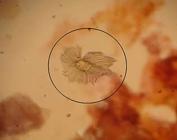Abstract
The avoidance of vertebrate herbivory is thought to be one of the possible drivers for the evolution of epiphytism. Scarce literature suggests that epiphyte herbivory is mainly related to insect attack on reproductive structures. In a pine-oak forest we observed almost all inflorescences of an epiphytic bromeliad (Tillandsia carlos-hankii) with signs of florivory; the degree of damage suggested that vertebrate herbivores could be involved. To assess the intensity of vertebrate florivory damage we recorded the percentage of damaged individuals in a 500 m2 plots during two flowering seasons. To identify possible vertebrate herbivores, we installed 20 mixed capture stations, 10 photo-traps focused on bromeliads and analyzed stomach contents of captured vertebrates. Florivory was observed on 62% of individuals during the first flowering season and 77% on the second; and average one individual lost 41% of reproductive structures. Vertebrates associated with florivory were a bird, Icterus bullockii (Aves, Passeriformes, Icteridae), a squirrel Sciurus aureogaster (Mammalia, Rodentia, Sciuridae), and mice, Peromyscus gratus, P. levipes and P. aztecus (Mammalia, Rodentia, Cricetidae). Our results suggest that vascular epiphytes are used as opportunistic resources for small vertebrates during seasons when preferred resources are scarce.
Keywords:
birds, herbivory; Peromyscus; pine-oak forest; squirrels; Tillandsia

 Thumbnail
Thumbnail
 Thumbnail
Thumbnail
 Thumbnail
Thumbnail


